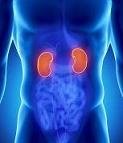Advertisment
BTS Report 2014: Medawar Medal winner – Poster Presentation

Quality assessment of human kidneys using ex-vivo normothermic perfusion
by Adam Barlow, University Hospitals of Leicester – Ex-vivo normothermic perfusion is a viable method of preserving kidneys for transplantation whilst preserving graft quality. Used correctly, it may help to increase transplant rates by reducing the number of discarded organs. Adam Barlow presented data on how functional parameters and visual assessment of kidneys during ex vivo normothermic perfusion can be used to assess graft quality and safeguard against primary non-function; this abstract was awarded the prestigious BTS 2014 Medawar Medal in the Best Clinical Paper class.
The NHSBT organ donation taskforce has led to a 50% increase in organ donation. Donors are getting older, and an increasing proportion of donations take place after circulatory death (DCD). To optimise organ utilisation and facilitate long-term clinical outcomes there is a need for improved retrieval and preservation protocols. The study by Adam Barlow and co-workers focused on renal transplantation and hypothesised that in addition to the current practice of assessing the suitability of organs for transplantation primarily based on donor characteristics together with histological examination and hypothermic perfusion, functional assessment using ex vivo normothermic perfusion (EVNP) provides a more reliable measure of viability and may allow more accurate prediction of graft outcome.
The study comprised a total of 65 kidneys that had been deemed unsuitable for transplantation after retrieval. The kidneys underwent EVNP with an oxygenated red blood cell-based solution at 36.0°C for 60 minutes. The primary functional parameters measured were renal blood flow and urine output; these were incorporated with macroscopic appearance into a viability score (renal blood flow <63mls/min =1; urine output <50ml/hr =1; macroscopic assessment of perfusion: good =1, patchy =2, poor=3), with a possible total score of 1 to 5. The analysis showed that out of the 65 discarded kidneys, 20 had a viability score of 1 (that is, high predicted viability), 14 scored 2, 13 scored 3, 5 scored 4 and 13 had a low viability score of 5. As part of the study the viability score was also applied to a series of 36 marginal kidneys which had been transplanted following EVNP, 26 of which had a viability score of 1-2, 10 scored 3-4 and none scored 5. In this series, kidneys scoring 1-2 had a delayed graft function rate of 3.8%, compared with 30% in those scoring 3-4 (p=0.056). A similar pattern was observed with respect to delayed graft function, with eGFR rates significant lower in kidneys with a score of 2-3 for up to three months post-transplant compared with kidneys scoring 0-1 (35 ± 11 vs 53 ± 17mls/min; P=0.005). Applying these findings, Adam Barlow and the team found that 52 of the 65 discarded transplant kidneys were deemed viable and suitable for transplantation, and concluded that use of EVNP in clinical practice may increase transplantation rates.





